
Many see them as killer snakes.
But that is not true. Even large boas don’t kill humans.
And many species actually make for great pets.
The best pet boas are ones that even a beginner can handle easily.
But some species that are better suited for those with experience are also good pets. We’ve got some of each below. Keep reading for a list of the best boa species to keep as pets.
Table of Contents
Types Of Boas For Pets
All species below make for good pets, but not all are good for beginners. Some are also quite similar. Our article comparing the boa constrictor and imperator can help you understand the differences between the two most common large boa species.
Red-Tail Boa
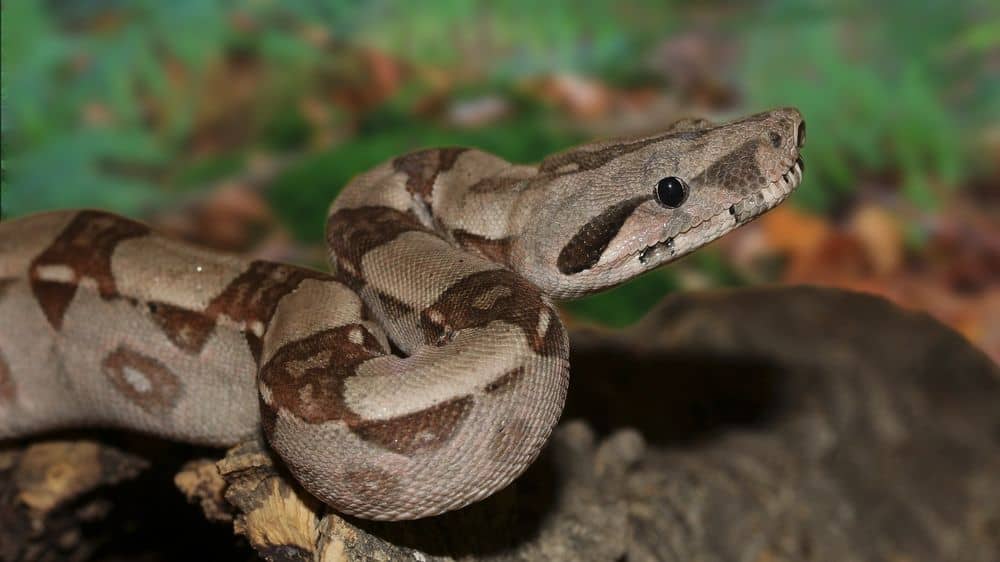
Red-tail boas are extremely popular boas in the pet trade and are readily available at pet shops, breeders, and reptile shows. They are docile, not too aggressive, and adapt well to handling.
However, their bites can be painful, although they are nonvenomous. They could also constrict around your hand if they think it is food!
Red-tail boas have beautiful dark red tails on light brown-gray bodies. They grow to impressive sizes of 11 feet and can measure almost 60 pounds.
For this reason, they need a large enclosure and an experienced handler. Since they come from tropical environments, you must strictly take care of their temperature and humidity needs. Do provide several branches in their enclosures, as they like to climb.
Red-tail boas only need a small amount of food. A large meal can sustain them for 3 to 4 weeks.
Common Boa/Northern Boa/Colombian Boa
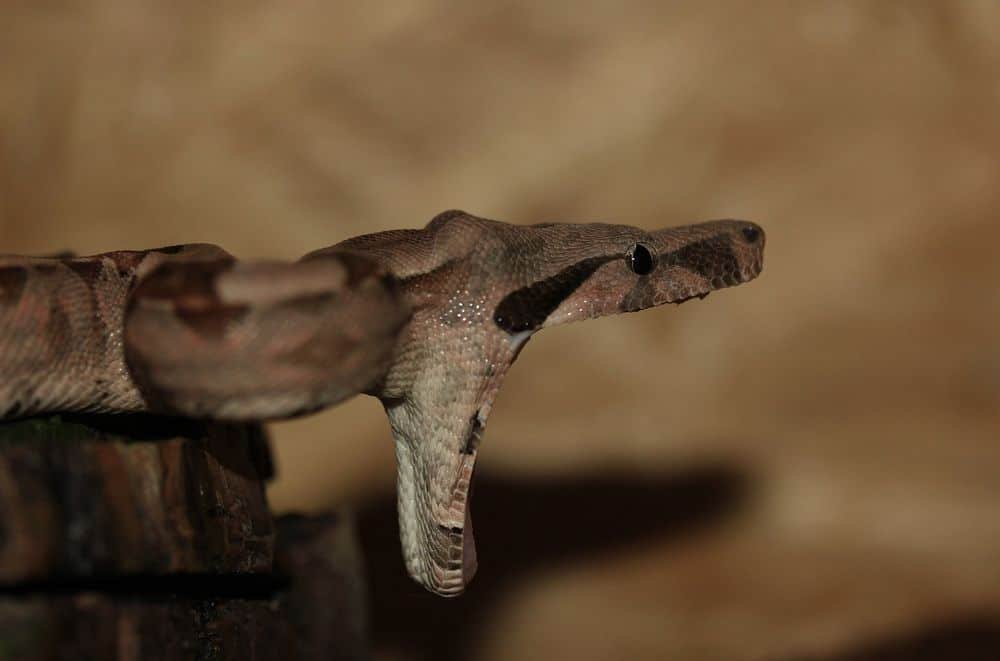
The average size of a common boa constrictor is 5 to 7 feet and they weigh about 60 pounds. This species makes a great exotic pet for experienced snake hobbyists. They vary in color from tan to light brown, with beautiful diamond patterns running along the sides.
Captive-bred Columbian common boas usually do not strike defensively and are quite tame. Nevertheless, you must take care while handling any snake over 5 feet. It may be best to have someone assist you while feeding your pet or cleaning its enclosure.
Like all large snakes, the common boa needs a large enclosure of at least 8 feet by 3 feet by 3 feet. Young Colombian common boas need a lot of food and can get very aggressive while feeding.
This is why this snake is generally best for experienced snake handlers. Their large size also makes them slightly impractical for families with kids.
Rosy Boa
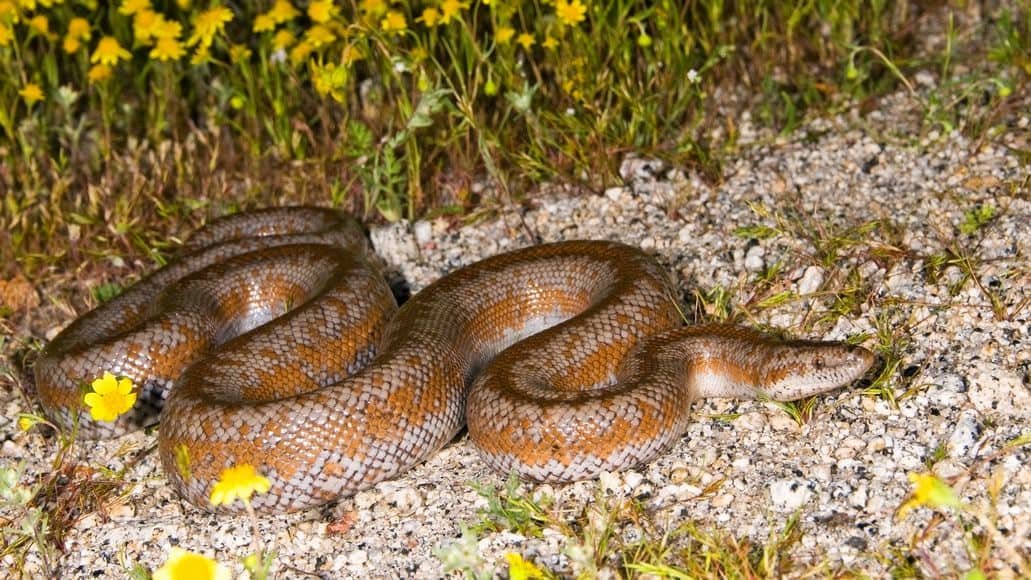
The rosy boa is one of the best pet boas because of its manageable size. It is also a beautiful snake, easily recognizable by the three black/brown/orange stripes running down its body. Most rosy boas measure about 1.4 to 3 feet and weigh around 1.3 pounds.
Rosy boas make great starter snake pets. They do not have as stringent humidity and temperature needs as other boas, making them quite easy to care for.
They are also good eaters and rarely refuse food. Their temperament can be described as laid-back and docile. All these factors make them one of the most sought-after pet boas.
Dumeril’s Boa
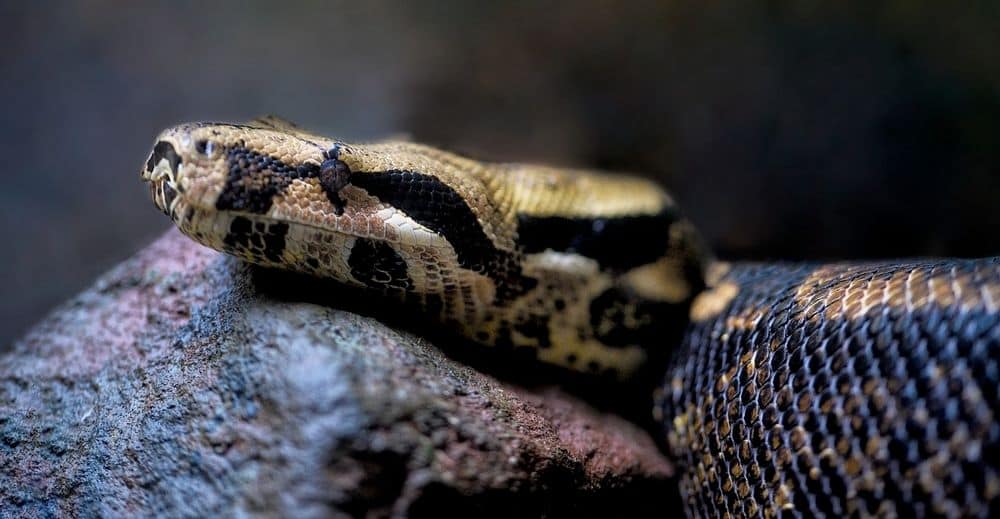
Dumeril’s boas are highly underrated as pets. They are small, manageable, and fairly easy to care for. Their calm temperament and small size make them excellent pets for young kids and beginners to snake-keeping.
Named after André Duméril, a French herpetologist, most Dumeril’s boas grow up to 3 to 6 feet (1 to 2 meters) at maturity. They have beautiful coloring ranging from dark brown, gray, green, pale peach, or coppery pink.
Dumeril’s boas are peaceful, calm snakes. Captive-bred ones are even known to cuddle or settle on their handler’s shoulders for a nap! Bites are rare and the snakes are nonvenomous. All these factors make Dumeril’s boas one of the best pet boas.
Brazilian Rainbow Boa
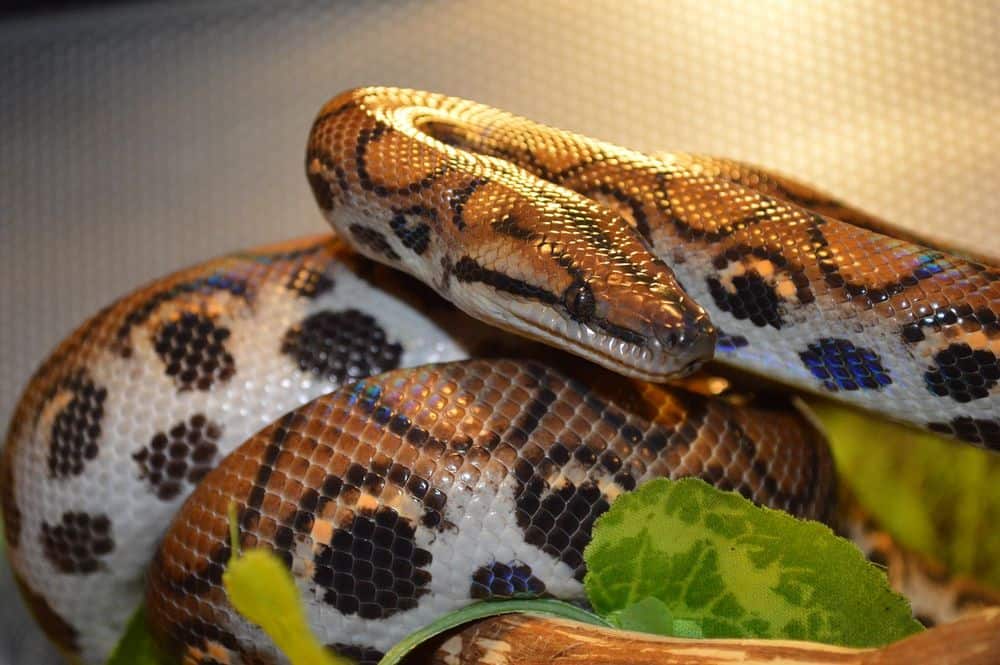
Brazilian rainbow boas are slim-bodied snakes that measure 5 to 7 feet long. They are possibly one of the prettiest snakes worldwide. Their colors vary from red to deep orange and they have deep crescents on the sides, forming incredible patterns that contrast with their base color.
Rainbow boas are mostly shy, docile snakes. They easily accept being handled and usually won’t strike out or bite. They are also fairly good eaters.
On the downside, this species is very humidity-sensitive. So, if you plan on getting one as a pet, please research its husbandry thoroughly. If needed, set up the enclosure a month before bringing the snake and monitor the temperature and humidity strictly.
Peruvian Long-Tail Boa
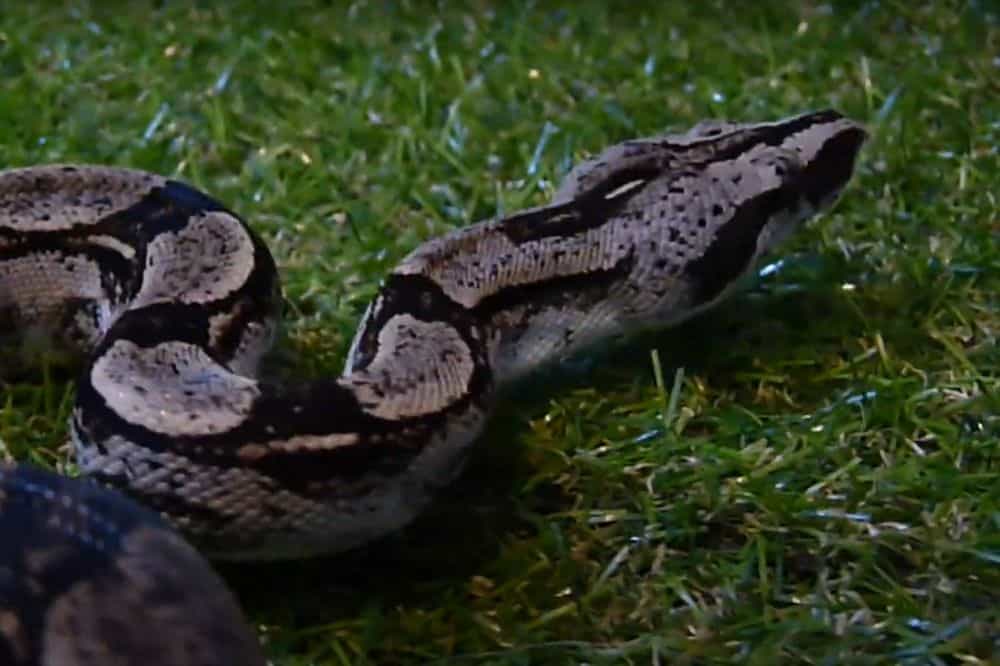
Peruvian long-tail boas are calm, docile boas with awesome personalities. The juveniles tend to be nippy, but that phase passes as they grow.
Most Peruvians grow up to 6 feet in size but they stay small in diameter. You can easily identify one based on the hourglass-shaped saddle patches on an ochre coloration.
Provide your Peruvian with a large vivarium with a temperature range of 85° to 90° F. This species has high humidity needs and you might find your pet soaking in its water bowl if the humidity dips to a lower range than acceptable.
Peruvian longtails mature slowly and need to be fed conservatively. They are hardy, long-lived snakes that make great companions for years to come.
Bolivian Short-Tail Boa
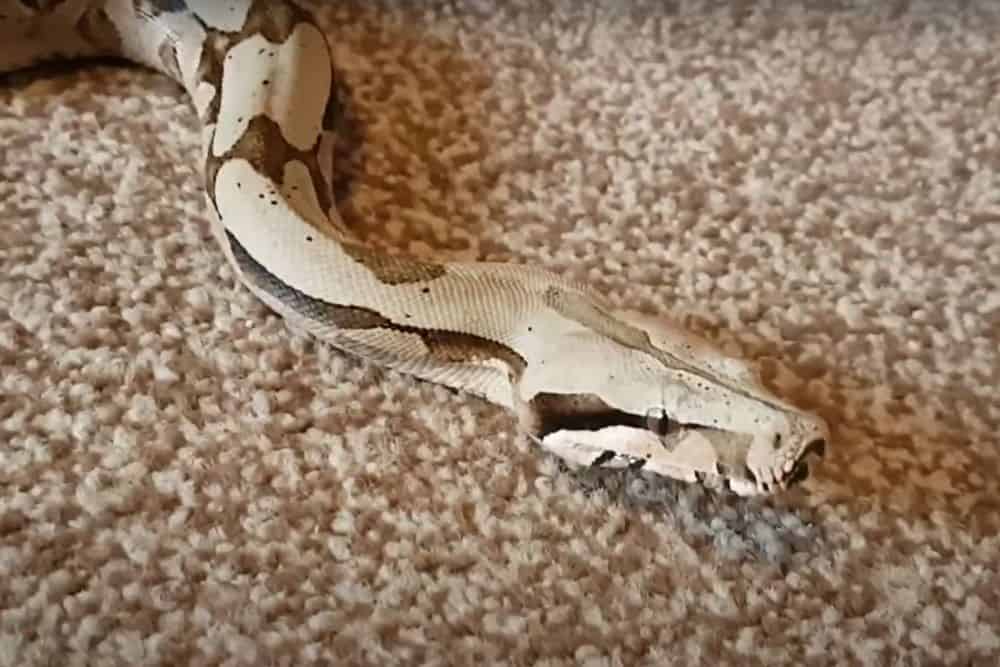
The Bolivian short-tail boa is short and stout, averaging between 4 and 6 feet in length. It is named ‘short-tail’ because of its shorter tail when compared to other types of boas.
The species’ manageable size makes it easier to handle than some of the other boa varieties. Bolivian boas have pastel or dark coloration with saddles or stripes. Some specimens have a silver-grey color, which is quite popular among boa keepers.
Bolivian short-tail boas’ husbandry is more forgiving than that of other boa varieties, especially when it comes to temperature. The hardy breed can tolerate cooler temperatures in the winter than other boas.
Leave the enclosure between 80° and 87° F during the day and lower it to around 75° F at night. You can maintain the humidity in the enclosure by spraying it with water once or twice a week.
Emerald Tree Boa
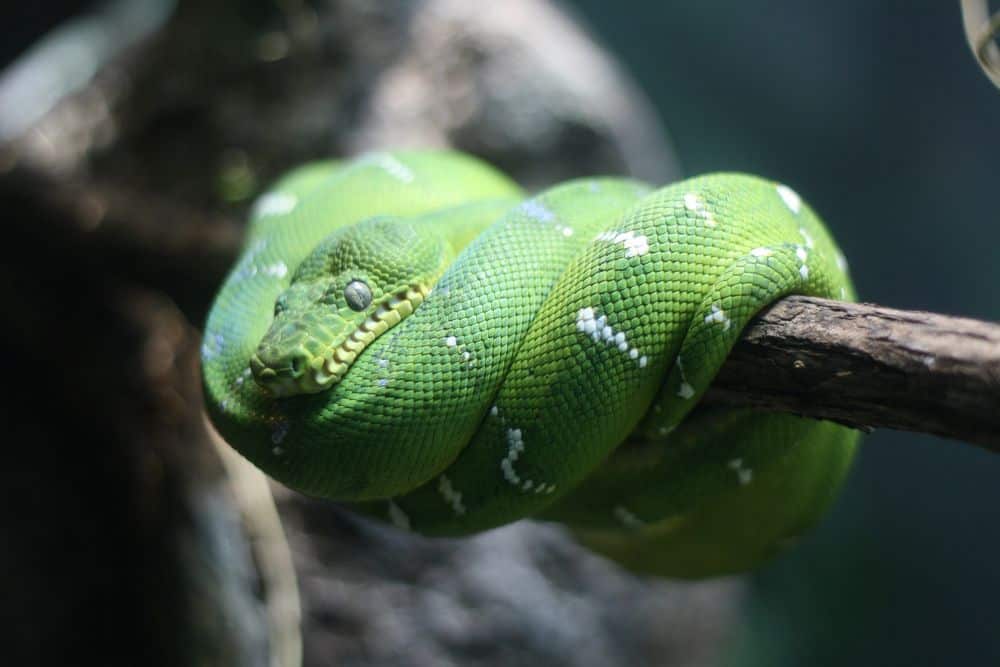
The emerald tree boa hails from either the northern or southern parts of Brazil. The northern emerald tree boa is quite aggressive, while its southern counterpart is more docile. If you plan to purchase an emerald tree boa, always ask the breeder about its origins.
While nonvenomous, the emerald tree boa could bite when threatened. Always be careful while handling it. The species also has a sensitive tail that is prone to breakage, so keep handling to a minimum.
Adults grow between 4 and 6 feet. They have a beautiful, bright green coloration with white stripes or zigzag patterns. Emerald tree boas enjoy a diet of rodents. With proper care and husbandry, emerald tree boas can live for almost 15 years.
Best Pet Boas: Final Thoughts
There are many boa species in the world. Despite their reputation, many of them actually make for good pets. But not all do.
The species listed above can all be good pet snakes. The best pet boas are smaller and docile, making them great for beginners.
Some other species that make for great pets may not be as suitable for beginners, usually due to their size, stricter environmental requirements, or an aggressive personality.
Leave a Reply